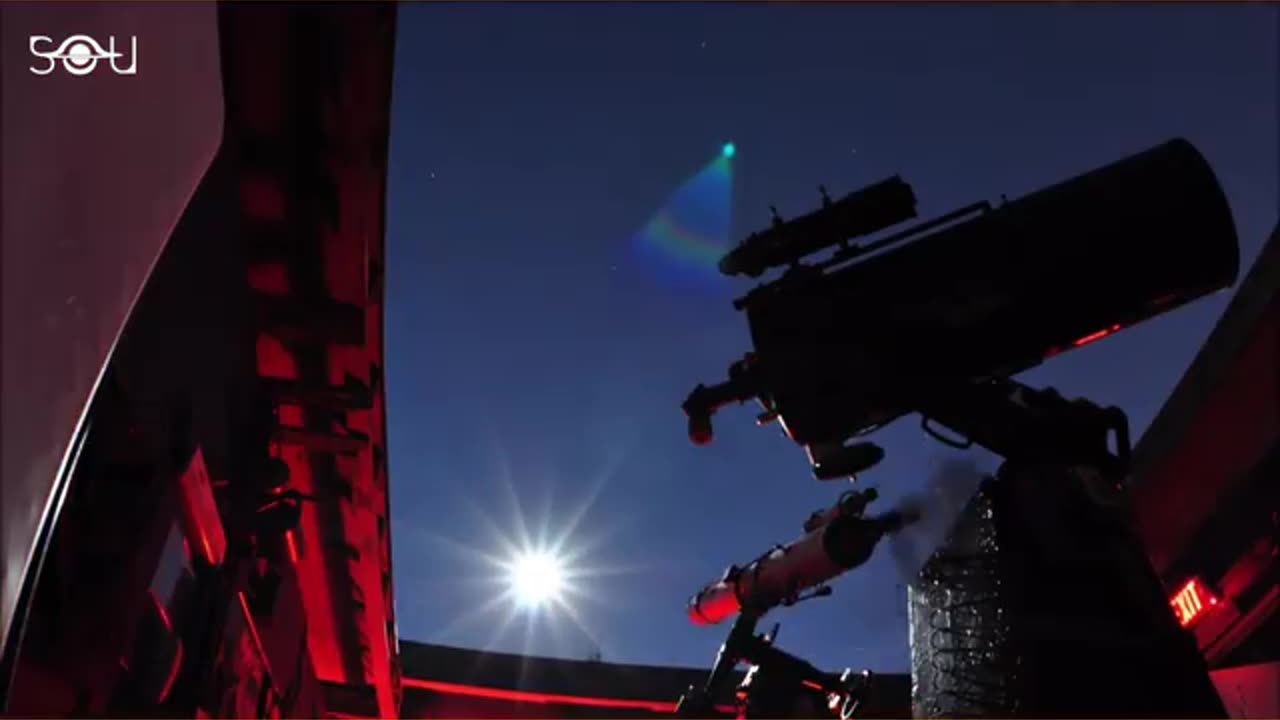Premium Only Content

Oumuamua | Mysterious Object in Solar System | Astroid or Alien Spaceship
Site logo
ASTEROIDS, COMETS & METEORS
'Oumuamua
Small object against a background of stars.
This very deep combined image shows the interstellar object ‘Oumuamua at the center of the image. It is surrounded by the trails of faint stars that are smeared as the telescopes tracked the moving comet. Credit: ESO/K. Meech et al.
Discovery
The first known interstellar object to visit our solar system, 1I/2017 U1 ‘Oumuamua, was discovered Oct. 19, 2017 by the University of Hawaii’s Pan-STARRS1 telescope, funded by NASA’s Near-Earth Object Observations (NEOO) Program, which finds and tracks asteroids and comets in Earth’s neighborhood. While originally classified as a comet, observations revealed no signs of cometary activity after it slingshotted past the Sun on Sept. 9, 2017 at a blistering speed of 196,000 miles per hour (87.3 kilometers per second). It was briefly classified as an asteroid until new measurements found it was accelerating slightly, a sign it behaves more like a comet.
Artist's concept of cigar-shaped space rock.
Artist's concept of interstellar object1I/2017 U1 ('Oumuamua) as it passed through the solar system after its discovery in October 2017. The aspect ratio of up to 10:1 is unlike that of any object seen in our own solar system. Image Credit: European Southern Observatory / M. Kornmesser
Overview
The first confirmed object from another star to visit our solar system, this interstellar interloper appears to be a rocky, cigar-shaped object with a somewhat reddish hue. The object, named ‘Oumuamua by its discoverers, is up to one-quarter mile (400 meters) long and highly-elongated—perhaps 10 times as long as it is wide. That aspect ratio is greater than that of any asteroid or comet observed in our solar system to date. While its elongated shape is quite surprising, and unlike objects seen in our solar system, it may provide new clues into how other solar systems formed.
The observations suggest this unusual object had been wandering through the Milky Way, unattached to any star system, for hundreds of millions of years before its chance encounter with our star system.
“For decades we’ve theorized that such interstellar objects are out there, and now―for the first time―we have direct evidence they exist,” said Thomas Zurbuchen, associate administrator for NASA’s Science Mission Directorate in Washington, in November 2017.
Animated view of interstellar object's orbit.
Immediately after its discovery, telescopes around the world, including ESO’s Very Large Telescope in Chile, were called into action to measure the object’s orbit, brightness and color. Urgency for viewing from ground-based telescopes was vital to get the best data.
Combining the images from the FORS instrument on the ESO telescope using four different filters with those of other large telescopes, a team of astronomers led by Karen Meech of the Institute for Astronomy in Hawaii found that ‘Oumuamua varies in brightness by a factor of 10 as it spins on its axis every 7.3 hours. No known asteroid or comet from our solar system varies so widely in brightness, with such a large ratio between length and width. The most elongated objects we have seen to date are no more than three times longer than they are wide.
“This unusually big variation in brightness means that the object is highly elongated: about ten times as long as it is wide, with a complex, convoluted shape,” said Meech. “We also found that it had a reddish color, similar to objects in the outer solar system, and confirmed that it is completely inert, without the faintest hint of dust around it.”
These properties suggest that ‘Oumuamua is dense, composed of rock and possibly metals, has no water or ice, and that its surface was reddened due to the effects of irradiation from cosmic rays over hundreds of millions of years.
A few large ground-based telescopes continued to track the fading object as it receded from our planet. Two of NASA’s space telescopes (Hubble and Spitzer) tracked the object traveling about 85,700 miles per hour (38.3 kilometers per second) relative to the Sun. Its outbound path is about 20 degrees above the plane of planets that orbit the Sun. The object passed Mars’s orbit around Nov. 1 and will pass Jupiter’s orbit in May of 2018. It will travel beyond Saturn’s orbit in January 2019; as it leaves our solar system, ‘Oumuamua will head for the constellation Pegasus.
Preliminary orbital calculations suggest that the object came from the approximate direction of the bright star Vega, in the northern constellation of Lyra. However, it took so long for the interstellar object to make the journey―even at the speed of about 59,000 miles per hour (26.4 kilometers per second)―that Vega was not near that position when the ‘Oumuamua was there about 300,000 years ago.
Astronomers estimate that an interstellar object similar to ‘Oumuamua passes through the inner solar system about once per year, but they are faint and hard to spot and have been missed until now. It is only recently that survey telescopes, such as Pan-STARRS1, are powerful enough to have a chance to discover them.
“What a fascinating discovery this is!” said Paul Chodas, manager of the Center for Near-Earth Object Studies at NASA’s Jet Propulsion Laboratory, Pasadena, California. “It’s a strange visitor from a faraway star system, shaped like nothing we’ve ever seen in our own solar system neighborhood.”
-
 2:00:37
2:00:37
Space Ice
9 hours agoSpace Ice & Redeye Try To Figure Out Seagal's Most Incoherent Movie
33.5K1 -
 1:00:36
1:00:36
PMG
22 hours ago $0.24 earned"Santa Trump is Giving Us Hope - But Will Johnson Stand Strong?"
46.1K9 -
 54:30
54:30
LFA TV
1 day agoThe German Strongman’s Arrival Is Imminent | Trumpet Daily 12.18.24 7PM EST
40K2 -
 2:04:11
2:04:11
Melonie Mac
6 hours agoGo Boom Live Ep 32! Soul Reaver Remastered!
33.2K8 -
 39:11
39:11
Sarah Westall
4 hours agoDigital Slavery and Playing with Fire: Money, Banking, and the Federal Reserve w/ Tom DiLorenzo
43.9K3 -
 1:38:38
1:38:38
2 MIKES LIVE
8 hours ago2 MIKES LIVE #157 ILLEGALS, PROTESTORS AND DRONES!
29.2K1 -
 1:01:03
1:01:03
LFA TV
1 day agoTHE LATEST SPENDING BILL IS AN ABOMINATION! | UNGOVERNED 12.18.24 5pm EST
33K36 -
 1:43:34
1:43:34
Redacted News
8 hours agoBREAKING! WARMONGERS PUSHING TRUMP TO LAUNCH PRE-EMPTIVE WAR WITH IRAN | Redacted News
140K261 -
 1:00:26
1:00:26
Candace Show Podcast
7 hours agoPiers Morgan x Candace Owens | Candace Ep 123
84K212 -
 2:06:51
2:06:51
Darkhorse Podcast
10 hours agoFollow the White Rabbit(s): The 256th Evolutionary Lens with Bret Weinstein and Heather Heying
61.5K27